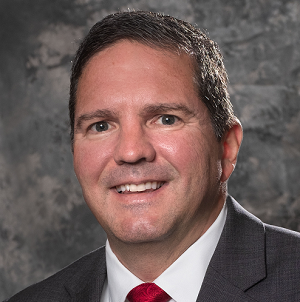Top-Level Takeaways
- Although federal charters can easily move across state lines, some state-chartered institutions are taking advantage of local regulations that permit statewide fields of membership.
- Some credit unions prefer to get their name out via awareness campaigns, others promote themselves through community involvement and charitable giving.
Whether through mergers, acquisitions, or de novo branches, expanding across state lines has become increasingly common for credit unions. But such moves are easier said than done. Expanding across state lines takes time, resources, and a strategic mindset — and credit unions attempting it without all three could struggle to achieve their desired result.

For Mountain America Credit Union ($19.3B, Sandy, UT), its initial expansion strategy was born of necessity more than two decades ago. Utah is home to just 3.5 million people, and the credit union was hamstrung by heavy restrictions that limited service areas for state-chartered cooperatives. The switch to a federal charter in the early 2000s made it easier for leadership to pursue multi-state merger opportunities, although the credit union does not identify as a federal charter in its branding.
Subsequent mergers and member needs brought Mountain America into Arizona, Nevada, New Mexico, Idaho, and Montana. Today, the credit union has a presence in a total of six states.
Merging across state lines is “not for the faint of heart,” says CEO Sterling Nielsen.
“The reality is that it’s a lot of work,” he says. “If you don’t really have a good reason to do it, don’t do it.”
Every market has its own personality and culture, according to the CEO. From state holidays like Pioneer Day in Utah and Nevada Day to competitive market pricing for team members and products alike, it’s crucial to be aware of local differences and then hire staff who understand those nuances.
Mergers have allowed Mountain America to enter new markets with built-in support for existing branches; however, those facilities are not typically reflective of the credit union’s brand, Nielsen advises. But over time, investments in facilities and brand awareness have paid off. In Boise, for example, Mountain America has grown a $90 million foothold to more than $500 million.
CU QUICK FACTS
MOUNTAIN AMERICA CREDIT UNION
HQ: Sandy, UT
ASSETS: $19.3B
MEMBERS: 1.2M
BRANCHES: 102
EMPLOYEES: 3,156
NET WORTH RATIO: 9.11%
ROA: 0.88%
Some credit unions will keep existing brands in place for a short time after a merger is completed, but Nielsen advises against that.
“It’s challenging to manage multiple brands,” he says. “We’ve made that mistake before. It’s best to make the cut right away and move on.”
Building and maintaining a unified culture across such different service areas requires good leadership — especially at the branch level, Nielsen says. Mountain America has evolved its structure over the years to include senior vice presidents, vice presidents, regional managers, and managers. Together, they ensure a unified approach and purposely overlap.
“Our senior leaders visit all the facilities on an annual basis,” Nielsen says. “We also fly in our leaders regularly to attend meetings to ensure we have time together face-to-face.”
Mountain America also leverages technology in its multi-faceted approach to communications. An intranet, morning meetings, quarterly town halls, and monthly leadership meetings help ensure team members at all levels receive consistent messaging — regardless of where they are located.
Building Awareness In New Markets
An individual approach to marketing in each state also helps build awareness and trust. For example, a new event center in Idaho Falls is now the Mountain America Center.
“It’s hard not to know us there,” the CEO says.
The credit union is also heavily involved with Boise State University and has made similar investments with Brigham Young University and Arizona State University, including football stadium naming rights. These large-scale sponsorships help create brand awareness, but Nielsen says word of mouth is what really makes the difference with recruiting new members.
“Investing in awareness is important, but most of our marketing is actually focused on giving back to students, education, and healthcare,” he says.
And if things aren’t working in one market, the credit union isn’t afraid to leave, Nielsen says. After each merger, Mountain America enters new markets with a time frame in mind during which management expects to operate profitably. Credit unions entering new states without merger partners should plan on a lot longer.
“You need to have a long-term appetite and understand it could be a five or even 10- year play in some of these markets,” he says. “It’s an investment, but once it does take hold, it can be very successful.”
Serving SEGs Leads To A Natural Expansion

United Federal Credit Union ($4.1B, Saint Joseph, MI) has long served both Whirlpool and Clark Equipment Company, large organizations with a foothold in multiple markets. Today the credit union is in seven states — many of them non-contiguous — and through mergers and organic growth it now has a presence in Michigan, Ohio, Arkansas, North Carolina, Nevada, Indiana, and, most recently, Pennsylvania.
“As a result of having done it for so long, we have developed a high level of competency in managing multiple states,” says Terry O’Rourke, CEO of United. “It was a great way for us to continue to grow.”
According to the CEO, the credit union’s strategic approach is to leverage the benefits of scale — including technology, product offerings, and expertise — while delivering a member experience that’s intensely personal and local.
O’Rourke cites two lessons in expanding. First, expansion markets are no less important than the credit union’s original market. And, second, it’s important to be intentional about ensuring teams in all markets feel connected.
“We act as a national credit union, not a Michigan credit union that happens to have locations in different states,” O’Rourke says. “We also ensure senior leaders, including myself, regularly visit each of our markets.”
Sensitivity around time zones is also important, as United must be prepared to serve employees across the country at all times. Management also allows for differences in each market in terms of branch hours, community involvement, and which products to promote more aggressively.
As a result of having done it for so long, we have developed a high level of competency in managing multiple states. It was a great way for us to continue to grow.
Credit union leadership holds monthly all-hands calls for employees in all locations, along with quarterly meetings for managers. In addition, the credit union frequently surveys employees and encourages them to submit ideas through an intranet portal.
“The biggest best practice is to empower regional leaders,” O’Rourke says. “Strong regional leadership and local decision-making are what allow us to thrive and enable our culture to shine through without constant oversight.”
That means hiring the right people and retaining local leadership.
CU QUICK FACTS
UNITED FCU
HQ: St. Joseph, MI
ASSETS: $4.1B
MEMBERS: 184,950
BRANCHES: 39
EMPLOYEES: 682
NET WORTH RATIO: 11.18%
ROA: 0.77%
O’Rourke says United thinks about growth in a variety of ways, starting with ensuring it is serving existing markets to the credit union’s full potential. Next, it looks at adjacent market growth where it can leverage brand awareness and local management.
“For example, we have a big presence in Reno and Carson, Nevada, so putting a branch in a new community 30 minutes away made sense for us,” he says.
Lastly, United considers brand-new markets but generally only enters those via mergers or acquisitions. After conducting due diligence on new markets, management considers factors such as size, population growth, local economic vibrancy, and competition.
“It’s far too expensive to enter a market where you have no presence and just start building branches,” O’Rourke says. “We prefer markets that aren’t major metro areas and have populations between 500,000 and 1 million people, where we’re able to make more of an impact.”
With that in mind, United’s M&A due diligence includes rigorous assessment of each institution’s culture.
“We want to retain the employees from the bank or credit union,” O’Rourke says. “Entering a new market becomes exponentially easier if you maintain the people.”
Callahan Client Webinar: A Blueprint For Entering New Markets
Moving into a new market is daunting and expensive, but the payoff could take your credit union to the next level. Join Jennifer Bolivar, senior vice president of business transformation for Suncoast Credit Union, on Aug. 27 as she shares best practices and lessons learned from the cooperative’s recent new market expansion.
